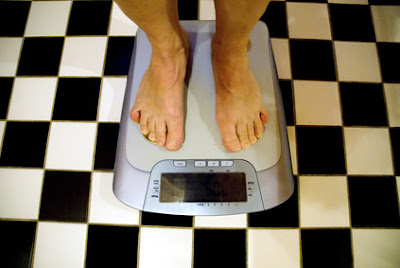For some young adults, the lack of adequate body
weight is a serious concern, particularly for those who have inherited a
tendency to thinness. These people would
likely fall into a BMI Category of less than 18.5 and be from 10% to 20% below
normal on a standard height-weight table.
Males tend to be particularly concerned with too thin a body type,
preferring a lean, muscular V-shape appearance.
Nutritionists believe that the healthiest way to
gain weight is to increase the intake of calorie-dense food. These foods are characterized by high fat
density resulting from high levels of vegetable fats (polyunsaturated
fats). Foods that meet this requirement
are dried fruits, bananas, nuts, granola, and cheeses made from low-fat
milk. These foods should be consumed
later in a meal so that the onset of satiety that quickly follows eating
fat-rich foods does not occur. The
current recommendation is to eat three calorie-dense meals of moderate size per
day, interspersed with two or three substantial snacks. Using the Food Guide Pyramid as a guide,
underweight people should eat the highest number of recommended servings for
each group.
A second component of weight gain for those who are
underweight is an exercise program that uses weight training activities
intended to increase muscle mass. The
use of anabolic drugs without highly competent medical supervision has no role
in healthful weight gain. In addition,
carefully monitored aerobic activity should be undertaken in sessions that
adequately maintain heart-lung health.
At the same time, unnecessary activity that expands calories should be
restricted.
For those who cannot gain weight, even by using
these approaches, a medical evaluation may offer an explanation. If no medical reason can be found, the person
must begin to accept the reality of his or her unique body type.
When
individuals fall below 80% of their desirable weight on standard height-weight
tables and display BMI rates from 16 to 10, it is highly probable that they are
not only underweight but, more important, undernourished. This condition suggests clinically
significant deficiencies in both the quantity of food being consumed and its
nutritional value. Whether the
undernourishment is associated with anorexia nervosa, other medical conditions
characterized by weight loss (such as irritable bowel disease), or poverty or
famine, affected people are in danger of death from starvation.













No comments:
Post a Comment